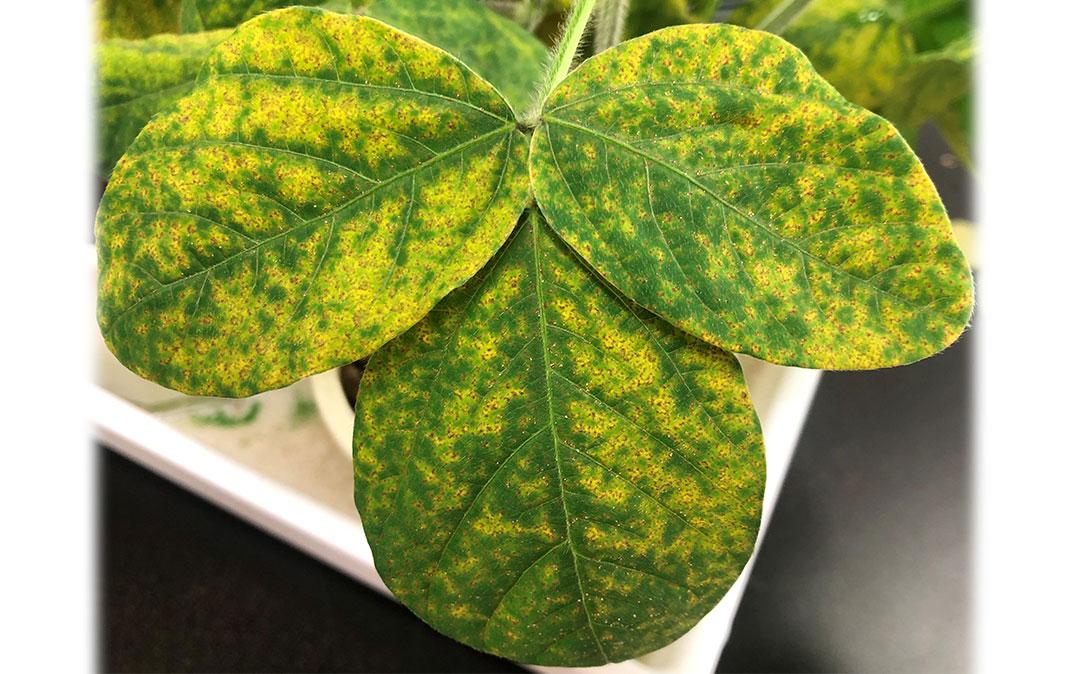Research News
'Anti-Rust' Coating for Plants Protects Against Disease with Cellulose Nanofiber

Researchers from the University of Tsukuba find that coating soybean plant leaves with cellulose nanofiber offers resistance to infection by Asian soybean rust pathogen
Tsukuba, Japan - A water-absorbent coat to keep rust away? It may seem counterintuitive but when it comes to soybean plants and rust disease, researchers from Japan have discovered that applying a coating that makes leaf surfaces water absorbent helps to protect against infection.
In a study published this month in Frontiers in Plant Science, researchers from the University of Tsukuba have revealed that coating soybean plant leaves with cellulose nanofiber changes the leaf surface from water repellent to water absorbent and offers resistance against Asian soybean rust.
Rusts are plant diseases that get their name from the powdery rust- or brown-colored fungal spores on the surfaces of infected plants. Asian soybean rust (ASR) is an aggressive disease of soybean plants, causing estimated crop yield losses of up to 90%. ASR is caused by Phakopsora pachyrhizi, a fungal pathogen that requires a living plant host to survive. The timely application of fungicide is currently the only way of controlling ASR in the field. But the use of fungicides can be problematic, resulting in negative environmental effects, increased production costs, and fungicide-resistant pathogens.
"We investigated cellulose nanofiber (CNF) as an alternative method of controlling ASR," says senior author of the study, Professor Yasuhiro Ishiga. "Specifically, we wanted to know whether coating soybean plant leaves with CNF protected plants against P. pachyrhizi."
Of the available methods for isolating CNF, aqueous counter collision (ACC) has been shown to alter the hydrophilic (water absorbent) and hydrophobic (water repellent) properties of surfaces, switching one to the other. Previous research has indicated that CNF obtained via ACC has higher wettability than CNF isolated by other methods.
"We showed that CNF can change the soybean leaf surface from hydrophobic to hydrophilic," explains senior author, Professor Yuji Yamashita. "This offers resistance against P. pachyrhizi."
The team found fewer lesions and significantly reduced formation of P. pachyrhizi appressoria, which are specialized pre-infection structures used to break through the outer surface of the host plant, on CNF-treated leaves compared with control (untreated) leaves. The results also revealed suppressed gene expression linked to the formation of pre-infection structures in P. pachyrhizi on treated versus control leaves.
"In particular, chitin synthase gene expression was suppressed, and P. pachyrhizi needs chitin synthases to form pre-infection structures," says Professor Ishiga.
This study is the first to investigate the application of CNF for controlling plant diseases in the field, and this technique offers new possibilities for sustainable and eco-friendly management of plant diseases.
###
This work was supported in part by the JST ERATO NOMURA Microbial Community Control Project, JST, Japan. YI has received research funds from Chuetsu Pulp & Paper Co., Ltd. and Marubeni Corporation.
Original Paper
The article, "Covering soybean leaves with cellulose nanofiber changes leaf surface hydrophobicity and confers resistance against Phakopsora pachyrhizi," was published in Frontiers in Plant Science at DOI: 10.3389/fpls.2021.726565
Correspondence
Assistant Professor ISHIGA Yasuhiro
Faculty of Life and Environmental Sciences, University of Tsukuba
Related Link
Faculty of Life and Environmental Sciences




